This week, our Rocket Roundup includes crewed space flights from the U.S. and China, Russia launches more satellites for OneWeb, and NASA launches the Lucy spacecraft to visit asteroids near Jupiter. Plus, this week in rocket history, we look back at the launch of the Cassini mission to Saturn.
Podcast
Show Notes
William Shatner, others make suborbital spaceflight on New Shepard Rocket
- Blue Origin press release
- Launch and landing video
- VIDEO: Today Show interview with William Shatner
Soyuz Rocket launches more OneWeb Satellites; constellation now half complete
- Arianespace press kit
Chinese rocket launches solar observatory, others
- CASC press release
Long March 2F launches next crew to Chinese space station
- CCTV post (Chinese)
Atlas rocket launches spacecraft to explore the Jupiter Trojans
- Overview (SwRI)
- Basics of Space Flight (NASA)
This Week in Rocket History: Cassini’s launch to Saturn
- Europeans Endorse Joint Space Mission (The Washington Post)
- PDF: Cassini Spacecraft and Huygens Probe (NASA via Internet Archive)
- Huygens (NASA)
- Cassini Completes Final — and Fateful — Titan Flyby (NASA)
- Cassini Quick Facts (NASA)
- PDF: Cassini Spacecraft Engineering Tutorial (NMSU)
Transcript
Hello, and welcome to the Daily Space. My name is Dr. Pamela Gay, and most weekdays the CosmoQuest team is here putting science in your brain.
Today, however, is for Rocket Roundup.
Let’s get to it, shall we?
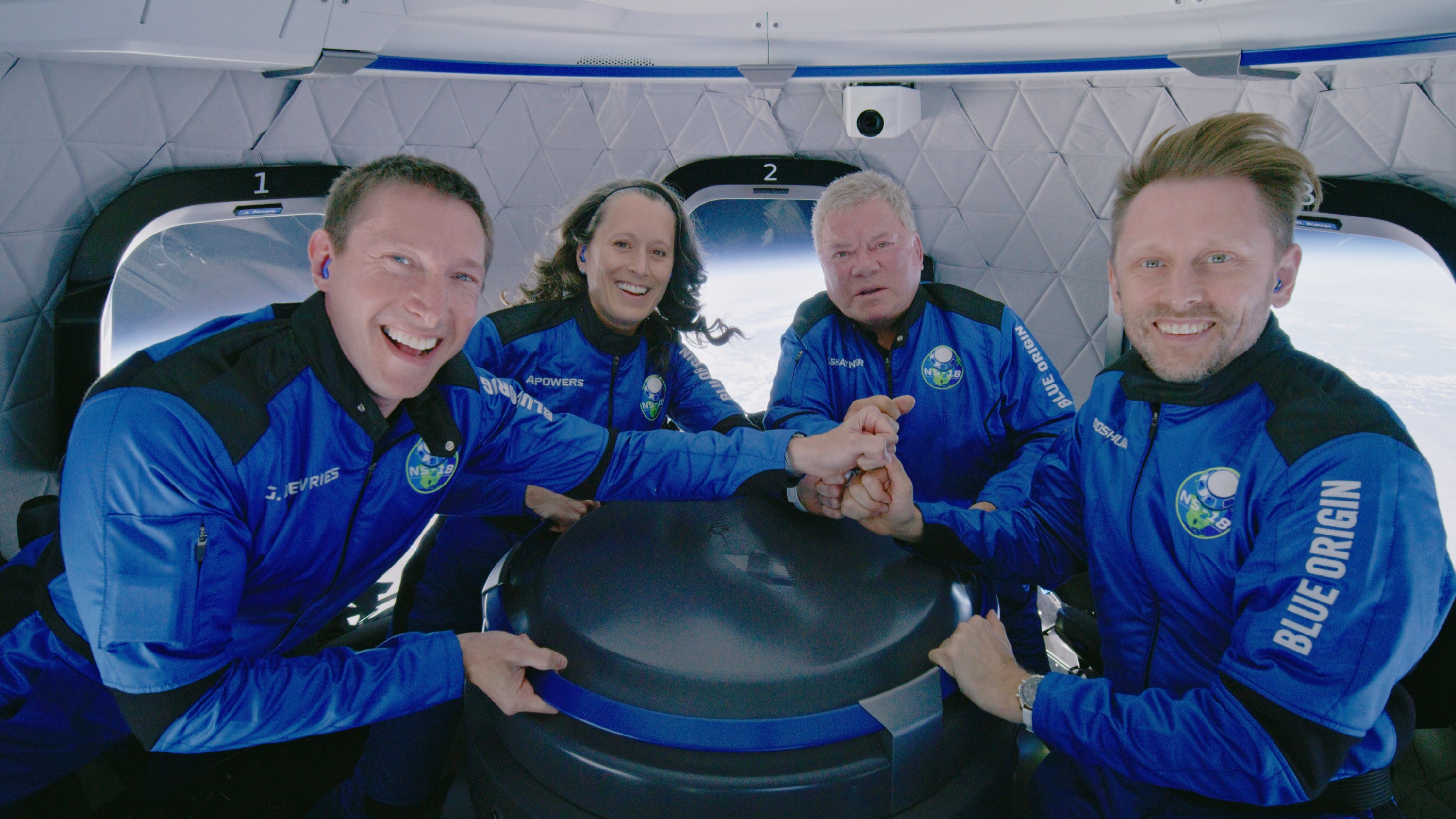
First up, on October 13, 2021, at 14:49 UTC, a Blue Origin New Shepard rocket launched on the NS-18 mission. Onboard were four total passengers: two paying passengers, Dr. Chris Boshuizen, co-founder of commercial orbit imaging company Planet Labs, and Glen De Vries, CEO of Medidata, a medical research company. Also on the flight were two guests of Blue Origin: former Star Trek actor William Shatner and Audrey Powers, Vice President of New Shepard Operations.
The countdown was nominal with the usual slight delays and even included a personal hatch closing from Jeff Bezos after the spaceflight participants boarded the capsule. Ten minutes and seventeen seconds after launch, the capsule successfully landed a few kilometers away from the launch pad. The booster returned for a safe landing back at the landing pad shortly before the capsule touched down.
We’ve seen New Shepard flights before, and even though it was just another nominal mission from a technical standpoint, there was something different about this one.
It would be a disservice to not mention how profoundly the experience affected William Shatner. We don’t often get to see people reflecting on their experience of seeing the Earth instead of just being on Earth immediately after experiencing it. While the rest of the passengers were celebrating their flight with lots of cheering and the almost inevitable spraying of bottles of champagne, Shatner was standing off to the side lost in his thoughts. He wasn’t talking to the camera. He wasn’t talking to the other passengers. He was clearly reflecting on what he had just experienced.
After a bit, he talked quietly with Jeff Bezos — who had been trying to bring him into the festivities — about his experience, recounting when the sky changed from blue to black and being able to see the planet as a ball hanging in space. This wasn’t scripted; it almost certainly wasn’t even meant for the cameras hovering around him and Bezos. It was a very personal conversation between him and Bezos that happened to be caught by the microphone.
This reaction to space isn’t unusual. It even has a name – “The Overview Effect” – and has been described by many astronauts in similar ways.
With this flight, William Shatner, who is 90, became the oldest person to fly in space, displacing Wally Funk who was 82 when she flew on the previous New Shepard mission a few months ago.

Next up, on October 14, at 09:40 UTC, Arianespace and its affiliate Starsem launched another 36 OneWeb satellites to orbit on a Soyuz 2.1b/Fregat from the Vostochny Cosmodrome in eastern Russia.
Vostochny is Russia’s newest launch site, and so far, only nine rockets have launched from the site since its opening in 2016 – mostly Soyuzes carrying OneWeb satellites.
The rocket’s Fregat upper stage conducted several engine burns over the course of two and a half hours and then inserted the 36 satellites into the target orbit in nine sets of four. This marks 358 satellites launched of a planned constellation of 648 OneWeb satellites, bringing the constellation to 55% complete.
OneWeb expects to begin commercial service at the end of this year to parts of Europe and North America.
This was the 1,947th R7-derived Soyuz since the first one launched 64 years ago.
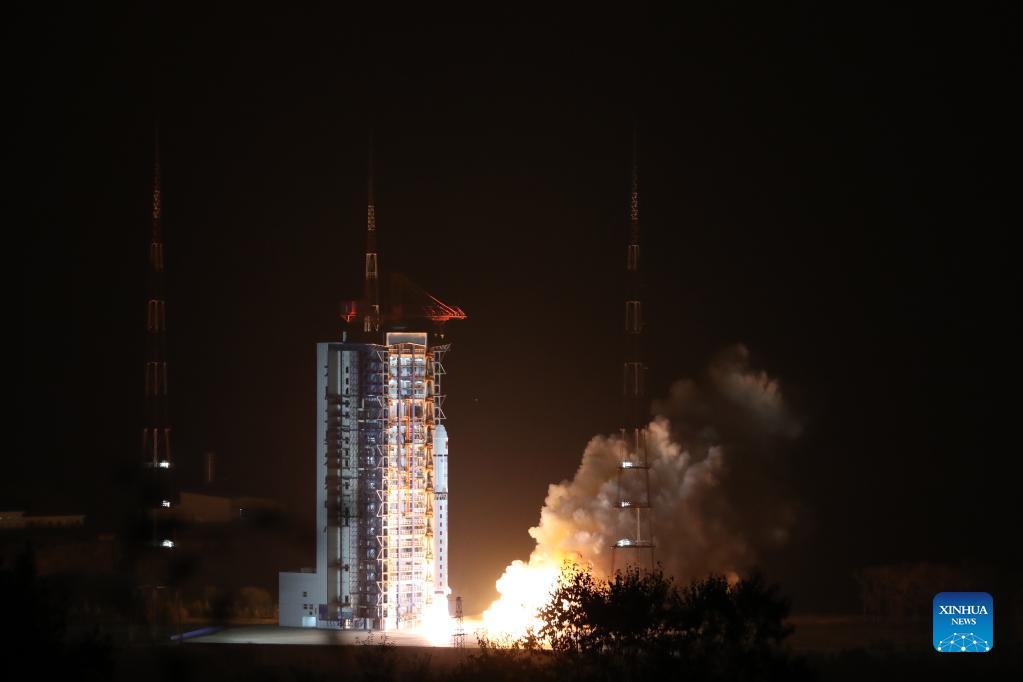
Also on October 14, at 10:51 UTC, a Chinese Long March 2D launched eleven satellites into a sun-synchronous orbit from the Taiyuan Satellite Launch Center. The Long March 2D rocket included grid fins on its first stage to reduce the size of its smash-down area and avoid hitting human structures, a first for this particular variant of the Long March rocket.
Among the eleven satellites was Xihe, China’s first solar observation satellite technology test satellite, also called CHASE or China H Alpha Solar Explorer. It operates in the H-alpha band, the spectral line most emitted by the Sun, and also has other missions. Its secondary purpose is to test a highly accurate pointing and stability system using “maglev technology”.
This was the 391st launch of a Long March rocket across all versions.
And now for another Long March launch, this time with humans.
On October 14, at 16:23 UTC, a Chinese Long March 2F launched the Shenzhou 13 spacecraft towards the Tianhe core module of the Chinese space station. This high-profile launch was covered live with a slight time delay on state television. Onboard were three astronauts: Zhai Zhigang, Wang Yaping, and Ye Guangfu. After six and a half hours, the trio autonomously docked to the station’s nadir or Earth-facing docking port, the first spacecraft to do so on Tiangong, and opened the hatch from their spacecraft into the station.
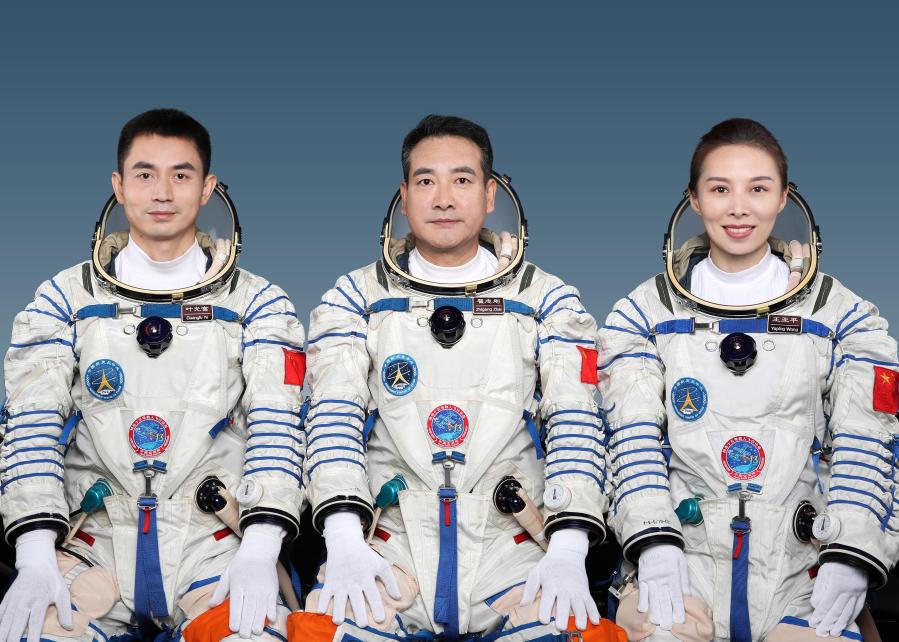
They will spend six months onboard the station, doubling the national record set by the crew of Shenzhou 12. Their first order of business will be to unpack the Tianzhou 3 resupply spacecraft which docked after the previous Shenzhou 12 crewed spacecraft departed. Tianzhou 3 contains all the supplies the crew will need for their mission.
To practice moving around future station modules that will be added in the coming years, the crew will also use the robotic arm to move the Tianzhou 2 resupply spacecraft from one port to another. To further practice station construction, the crew will also perform two to three spacewalks. They will also monitor the health of the astronauts and the station, including its life support system over the six-month mission.
Astronaut Zhigang first flew on Shenzhou 7, Yaping flew on Shenzhou 10 becoming the second Chinese woman in space. She will become the first Chinese woman to fly into space twice and the first to perform a spacewalk. Gangfu is making his first spaceflight. These three were originally assigned as the backup crew for Shenzhou 12.
Next, on October 16, at 09:34 UTC, a United Launch Alliance Atlas V 401 launched NASA’s Lucy probe into a solar orbit to eventually reach the Jupiter Trojan asteroids from SLC-41 at Cape Canaveral Space Force Station in Florida.
According to the Lucy mission, the Jupiter Trojans are asteroids that are probably remnants from the formation of the outer planets. Exploring asteroids in this region could give us clues to the history of the solar system and the origins of organic materials on Earth.
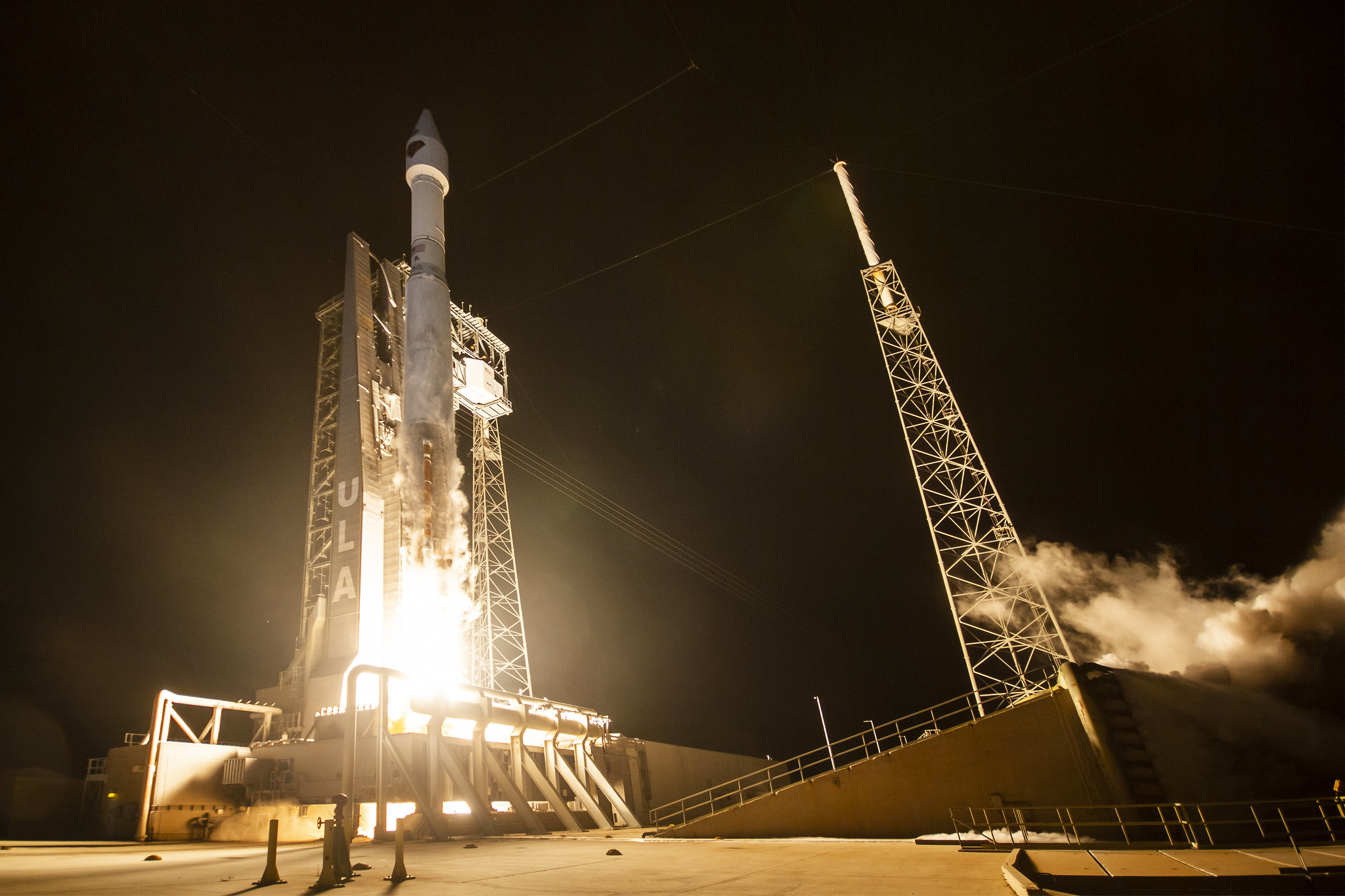
The Atlas V 401 rocket has one RL-10 engine on its Centaur upper stage, a four-meter class fairing, and no solid rocket motors on the first stage. Slightly less than one hour after launch, the Lucy spacecraft was deployed from the Centaur upper stage after two burns to put it in orbit and then send it out of Earth orbit. But it can’t head directly out to the Trojan asteroids just yet.
Lucy will gain speed from two Earth gravity assists, one in 2022 and the other in 2024, to send it out into an elliptical orbit that intersects the Sun-Jupiter Lagrange point 4, sixty degrees in front of Jupiter in its orbit.
Any two bodies in a gravitationally bound system have five areas, called Lagrange points, that a third body (for instance, a spacecraft) can orbit in, so you have to specify which two bodies’ Lagrange point you are referring to, with the more massive body first.
Lagrange points 4 and 5 are the most stable points of intersecting gravity wells between bodies because of their extended size. Sun-Earth’s L4 and L5 are stable but much less so than others. Objects stay there but not forever. Objects can stay at Sun-Jupiter L4/L5 for extremely long periods of time, essentially forever, without propulsion. The Coriolis force has time to act on objects in these bigger gravity wells. That’s what makes them good for trapping the remnants of the building blocks of the solar system which Lucy is designed to investigate.
If you want to know more about Lagrange Points and orbital mechanics in general, check out the show notes and the Patreon bonus content for this week.
Before it reaches Sun-Jupiter L4, Lucy will fly by an outer main-belt asteroid. Then it will reach Sun-Jupiter L4 and flyby four asteroids in this location in 2027 and 2028 and head back into the inner solar system for one more Earth flyby in 2031. This flyby will shift its elliptical orbit to allow flybys of the Sun-Jupiter L5, sixty degrees behind Jupiter. Once it reaches apogee again, it will fly by a binary asteroid at Sun-Jupiter L5 in 2033 and conclude its nominal mission after visiting seven asteroids. It could reach further asteroids in either Sun-Jupiter L4 or Sun-Jupiter L5 if the spacecraft is still functioning properly and the mission is extended.
This Week in Rocket History

This week in rocket history: Cassini, the first mission to orbit Saturn.
In the early 1980s, NASA and the then-brand-new European Space Agency were planning missions where the two agencies could collaborate. One of the missions that came out of those talks was a joint Saturn orbiter with a Titan atmospheric probe. ESA officially selected Cassini-Huygens in 1988, and NASA got funding for it in 1989.
The mission survived cancellation efforts by the U.S. Congress twice during development: once each in 1992 and 1994. Fortunately, a combination of wanting to preserve foreign relations during the immediate aftermath of the Cold War and funding from the European Space Agency allowed NASA to keep their funding for the mission.
The original design of the spacecraft was supposed to be the first in a series using a bus called Mariner Mark II, however other missions using the Mariner Mark II were canceled, and the spacecraft was redesigned to be more suitable for Cassini’s mission.
Cassini ended up massing 5.6 metric tons, which included:
- liquid propellant, which accounted for more than half of the mass,
- 33 kilograms of plutonium-238 for the spacecraft’s three Radioisotope Thermoelectric Generators (RTGs)
- twelve separate suites of scientific instruments on the orbiter in three general categories, Optical Remote Sensing, Microwave Remote Sensing and Particles, Fields and Waves
- and an additional six instruments on the detachable Huygens probe, intended to deploy into the atmosphere of Titan. Its instruments were dedicated to identifying the composition of the atmosphere and the physical properties of the surface.
Cassini’s complexity was increased because it needed to survive the extremes of space before reaching Saturn. It needed to be protected from intense heat during its brief trip into the inner solar system. Once it made it to the outer solar system, heaters were necessary because the area around Saturn is cold.
So, if Cassini was headed to Saturn, why make the trip to the inner solar system? The short answer is rocket science. The long answer is that taking a quicker route to Jupiter would have resulted in needing more propellant to slow down and that would have required a bigger rocket or fewer science instruments. The rocket equation is not your friend. To maximize the science, Cassini took the seven-year-long route to Saturn that required a Venus flyby, two Earth flybys, and a Jupiter flyby.
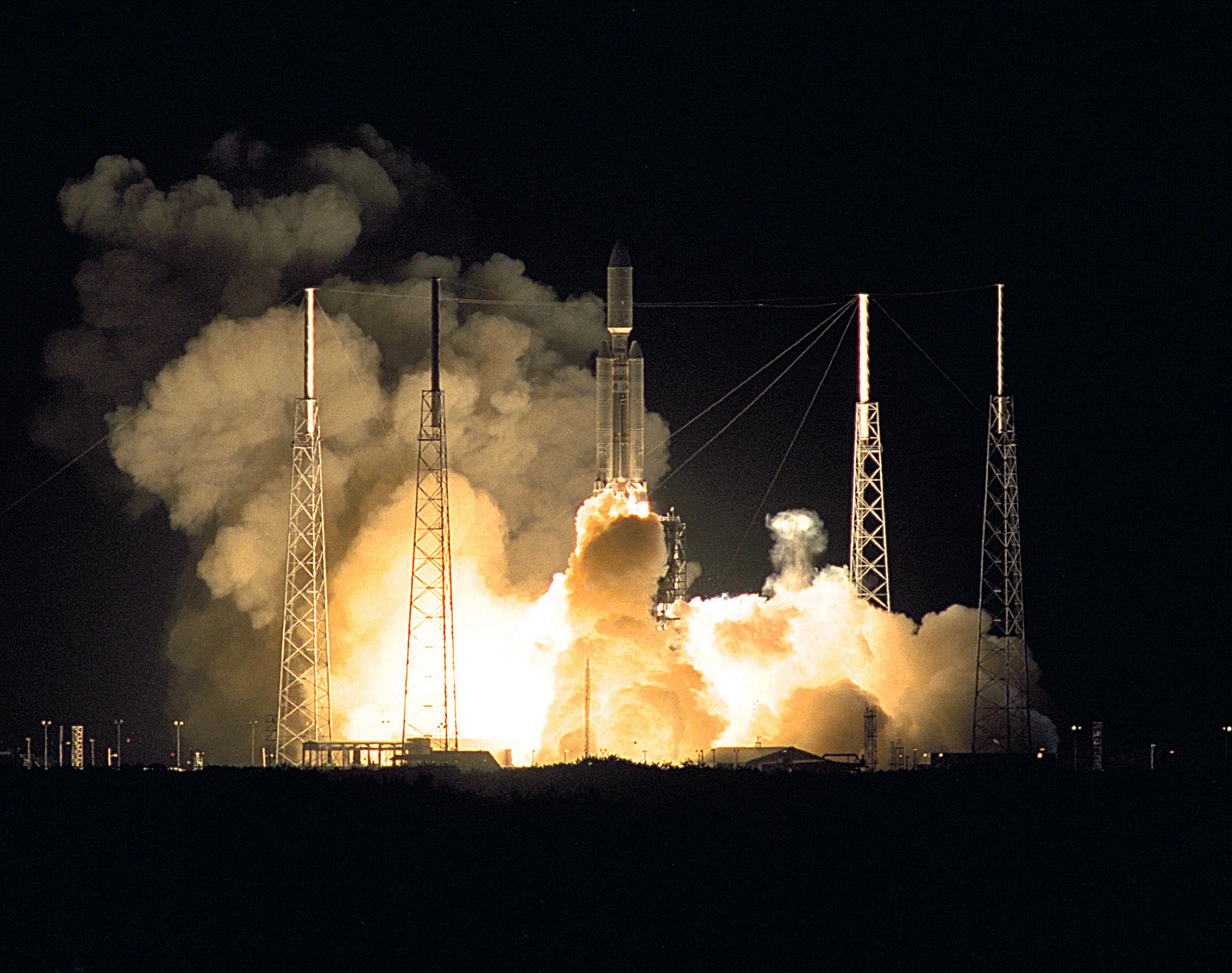
Cassini launched on October 15, 1997, and made Saturn orbit on July 1, 2004. Huygens, which was provided by the European Space Agency, was deployed from Cassini on December 25, 2004, and landed on the surface of Titan almost three weeks later on January 14, 2005. It was designed to measure both the atmosphere and surface of Titan and after entering the atmosphere, spent a leisurely two and a half hours floating down to the surface. It was only expected to last a few minutes on the surface if it landed on solid ground at all. It could have landed on liquid, and it was designed to float. Huygens ended up transmitting from the surface of Titan for over three hours, far beyond expectations.
Huygens discovered evidence that its landing site was shaped by flowing liquid at some point in the recent past geologically speaking, which could have been anywhere from thousands to millions of years ago. That was just the first thing discovered by this incredible mission.
Cassini used the gravity of Titan to slingshot around the Saturn system flying by moon after moon for the next thirteen years. In all, Cassini made one hundred sixty-five moon flybys while at Saturn of which almost 80% were of Titan.
It returned an incredible amount of data that revealed large hydrocarbon lakes on the northern half of Titan, liquid water geysers with organic components on the south pole of Enceladus, the discovery that there is a seasonal component to Saturn’s storms, and that there is a massive standing wave storm in the shape of a hexagon on Saturn’s north pole.
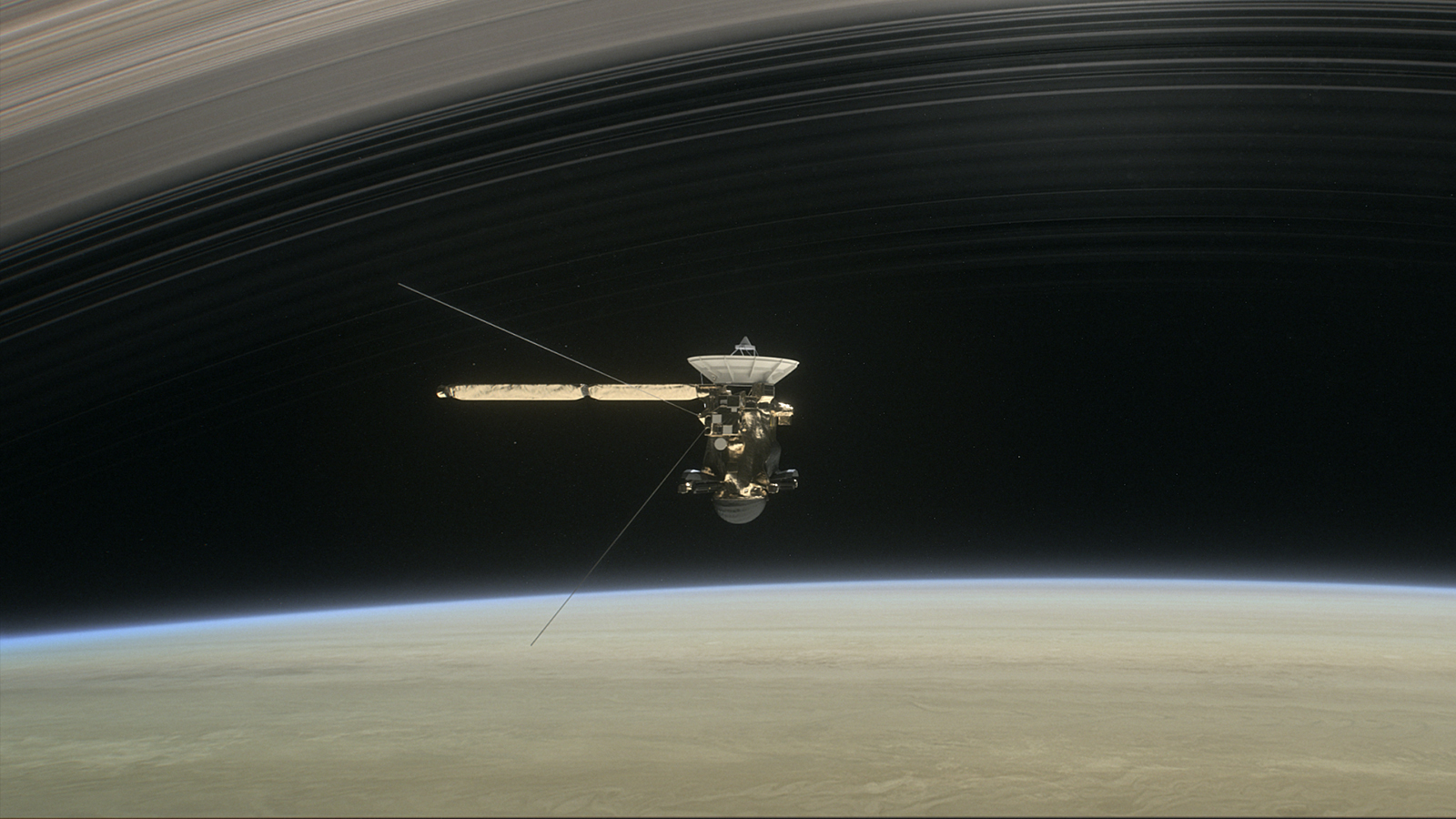
After twenty years of exploration, Cassini was almost out of propellant, so the decision was taken to send it intentionally into Saturn’s atmosphere where it would burn up and preserve the possibility of life on Enceladus and other moons. Cassini’s mission ended on September 15, 2017, but before it burnt up, it went out with a show, flying through the gap between the innermost ring 22 times, including five trips through the upper atmosphere of Saturn before its final, terminal orbit where it sent data back right up to the last moment.
Cassini returned 635 gigabytes of data, which doesn’t sound like a lot in 2021, but the spacecraft sent all of that data back over thirteen years at speeds that would be like spending over two weeks to download one 1080p feature-length movie. It’s pretty impressive how much information it sent back.
Four years have passed since the end of Cassini’s mission, and we’re still learning new things about Saturn four years after the mission ended and will continue to learn new things for years to come. It opened the Saturn system up; previous missions had only spent mere hours passing through certain parts of the system before speeding on. Cassini spent over a decade orbiting the planet.
Statistics
To wrap things up, here’s a running tally of a few spaceflight statistics for the current year:
Toilets currently in space: 9: 4 installed on ISS, 1 on the Crew Dragon, 1 on the Soyuz, 1 on the other Soyuz, 1 on the Shenzhou, and 1 on Tianhe.
Total 2021 orbital launch attempts: 100, including 8 failures
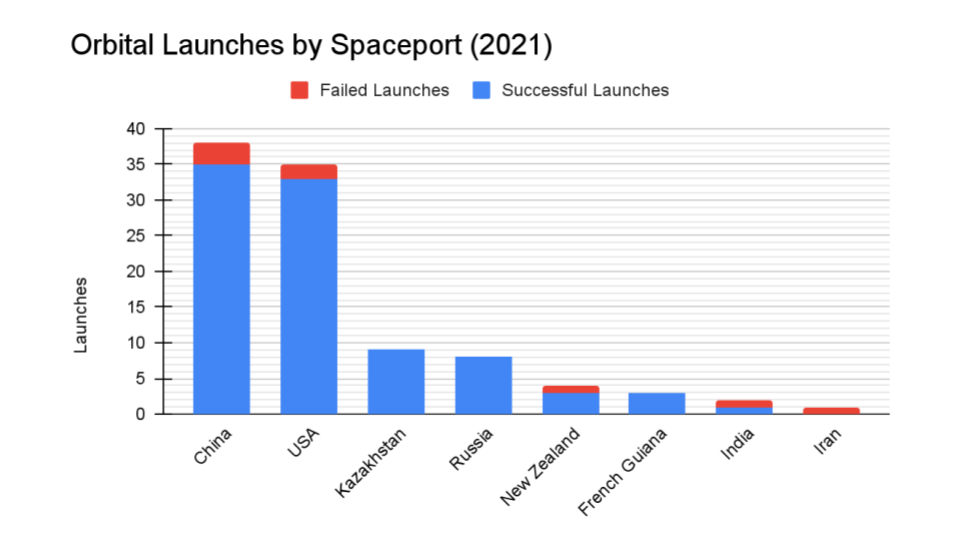
Total satellites from launches: 1508
I keep track of orbital launches by where they launched from, also known as spaceport. Here’s that breakdown:
China: 38
USA: 35
Kazakhstan: 9
Russia: 8
New Zealand: 4
French Guinea: 3
India: 2
Iran: 1
Your random space fact is one of the other missions originally intended to use the Mariner Mark II spacecraft design eventually became New Horizons, back when it was called Pluto 350. Another one was ESA’s Rosetta.
This has been the Daily Space.
You can find more information on all our stories, including images, at DailySpace.org. As always, we’re here thanks to the donations of people like you. If you like our content, please consider joining our Patreon at Patreon.com/CosmoQuestX.
Credits
Hosts: Pamela Gay
Writers: Dave Ballard, Gordon Dewis, Pamela Gay, Erik Madaus, and Annie Wilson
Audio and Video Editing: Ally Pelphrey
Content Editing: Beth Johnson
Executive Producer: Pamela Gay
Intro and Outro music by Kevin MacLeod, https://incompetech.com/music/


 We record most shows live, on Twitch. Follow us today to get alerts when we go live.
We record most shows live, on Twitch. Follow us today to get alerts when we go live.